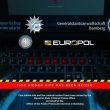Interscatter Communication May Re-Define how Chronic Diseases are Managed — Benign everyday medical devices to communicate with smart tech to aid in ailment detection
Researchers are constantly striving to identify newer ways of communication and data collection. In a recent revelation, scientists informed that they have managed to develop a method that allows seemingly constrained devices like contact lenses, credit cards and brain implants to communicate with smart gadgets including smart watches and smartphones. This is being referred to by scientists as “interscatter communication.”

This kind of communication works by transforming Bluetooth signals into Wi-Fi transmission and it uses just reflections to convert Bluetooth signals emitted from a smartphone into Wi-Fi transmissions, which are easily detected by a smartphone.
Related: Hacking Brain Possible with DARPA’ New Targeted Neuroplasticity Training Program
According to a doctoral student from the University of Washington, Vikram Iyer, “wireless connectivity for implanted devices can transform how we manage chronic diseases.” Iyer further explained with an example: “A contact lens could monitor a diabetic’s blood sugar level in tears and send notifications to the phone when the blood sugar level goes down.”
The reason is that these smart contact lenses are located at key areas in the body and thus, are constrained by the power demand of transmitting data through traditional wireless transmissions. It has been proven by the team that such power-constrained devices have the ability to “communicate” or “talk” to other devices via the standard Wi-Fi communication. However, it must be noted that the system can only work with mobile devices that generate Wi-Fi signals through 10,000 times less energy in comparison to other methods.
The communication relies upon backscatter technique, which is a technique that lets devices exchange information through reflecting existing signals. This is why the technology has been dubbed as “Interscattering.” This technology makes use of Wi-Fi,
Bluetooth and ZigBee radios that are usually embedded in handheld devices such as laptops, smartphones, smart watches, tablets and headsets. That’s because these devices use both the receivers and sources for these reflected signals.
Related: Fingerprints are History — Brain Scans will be the Next-Gen Passwords
Must Read: Student creates glove that reduces Parkinson’s tremors by 80%
Interscatter Interscatter (Pdf) University of Washington








